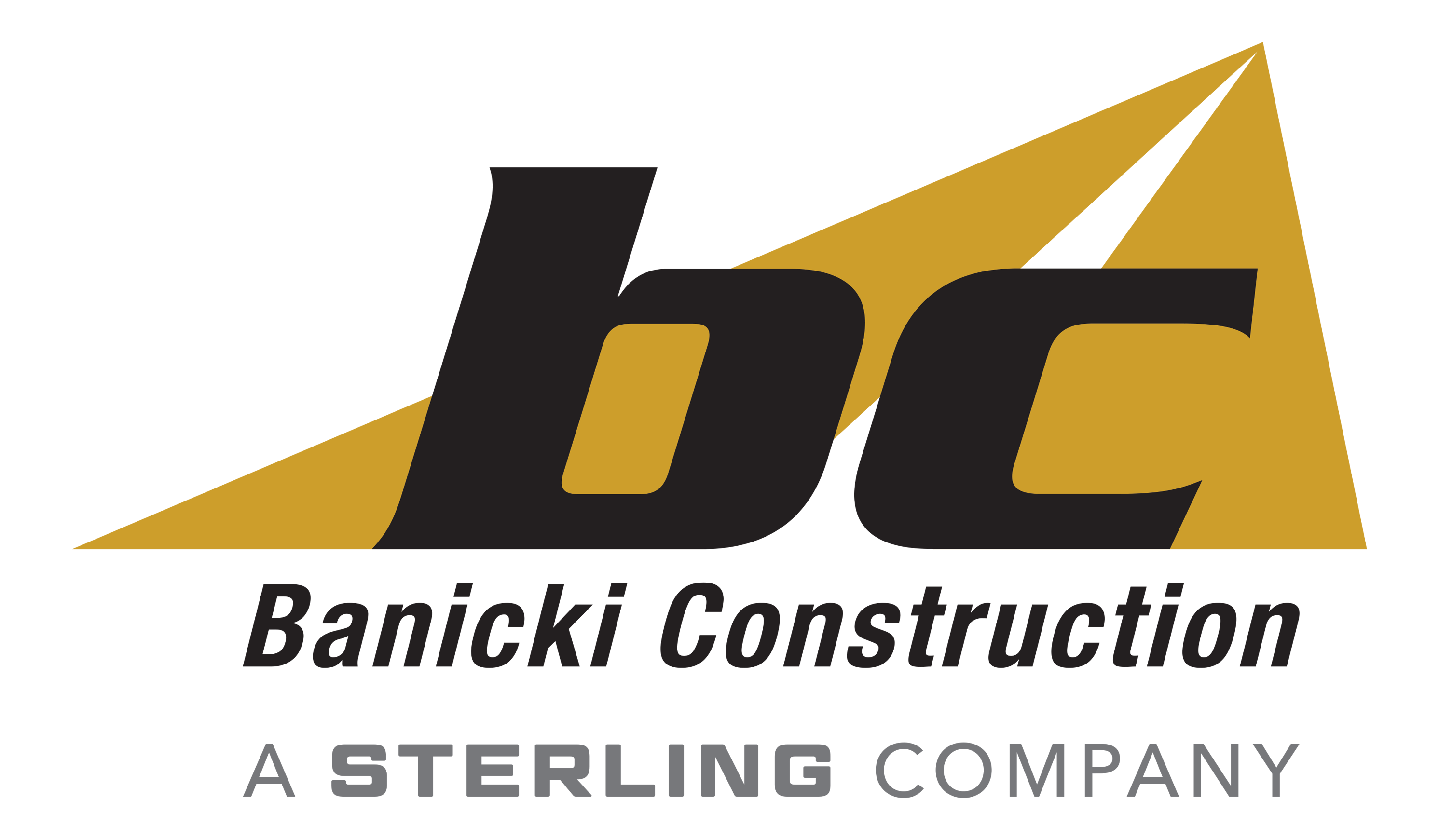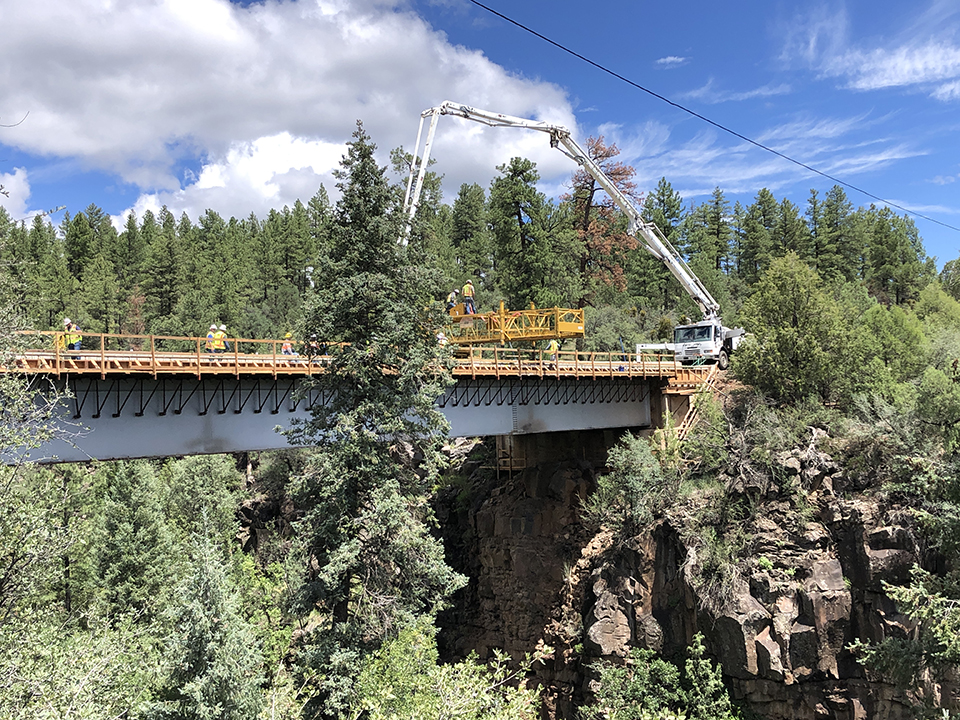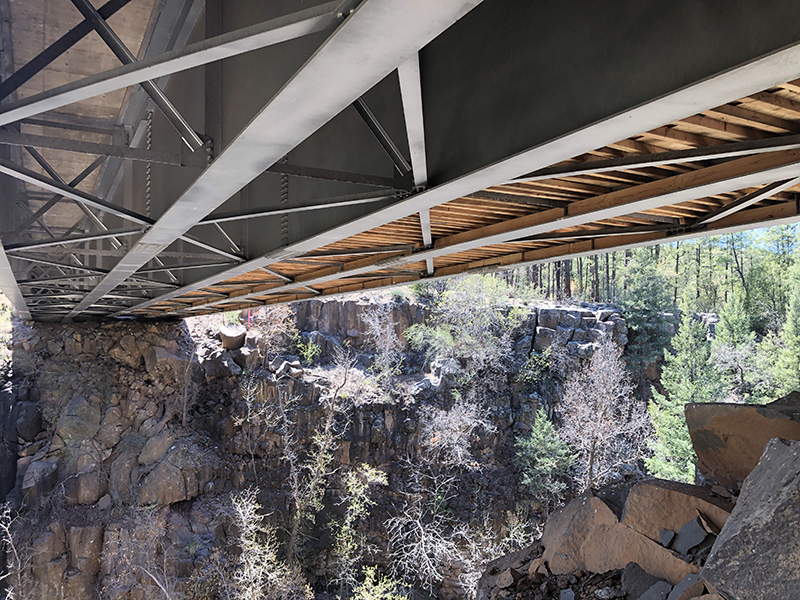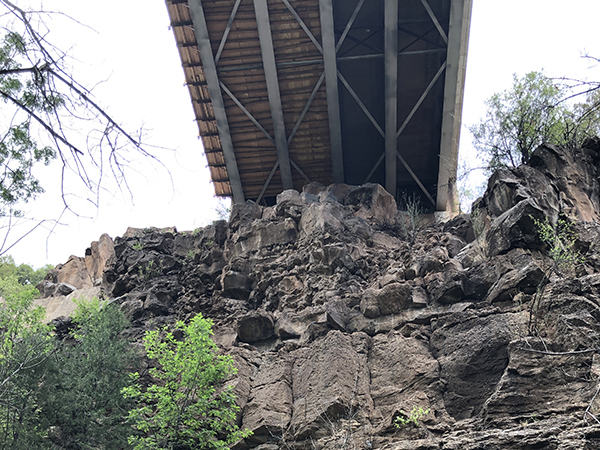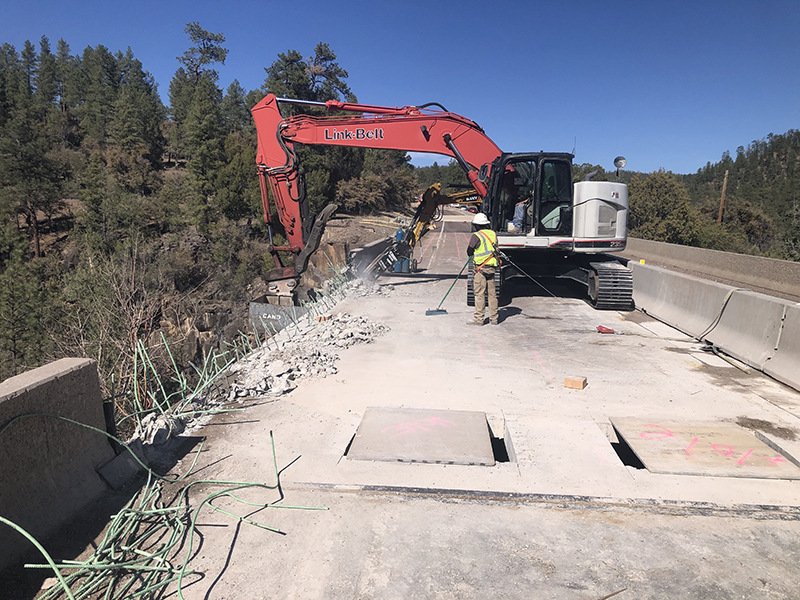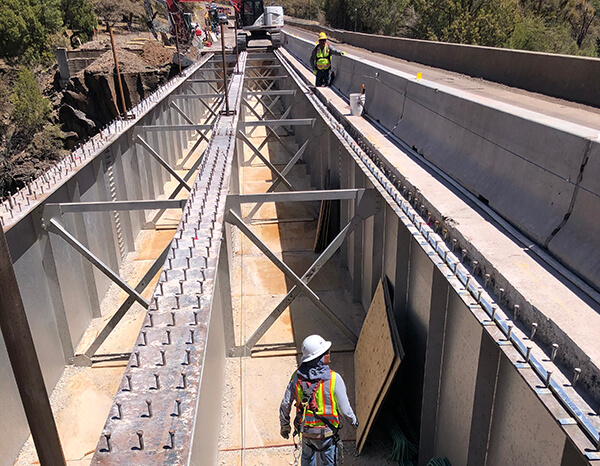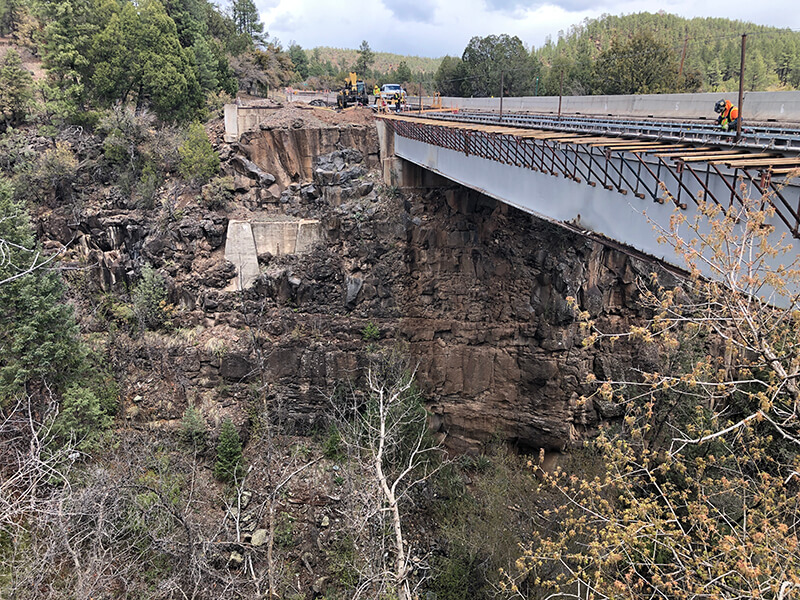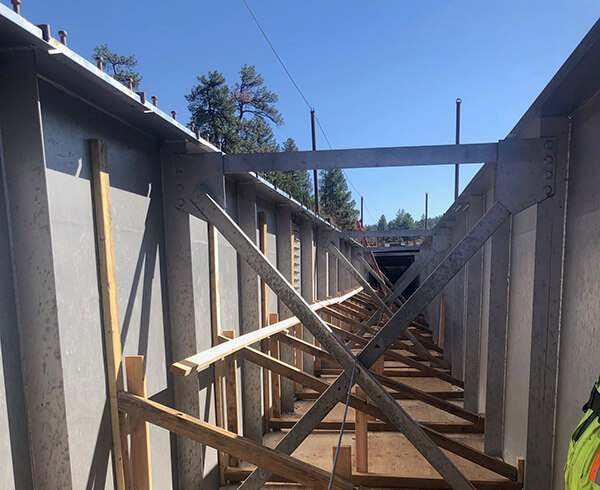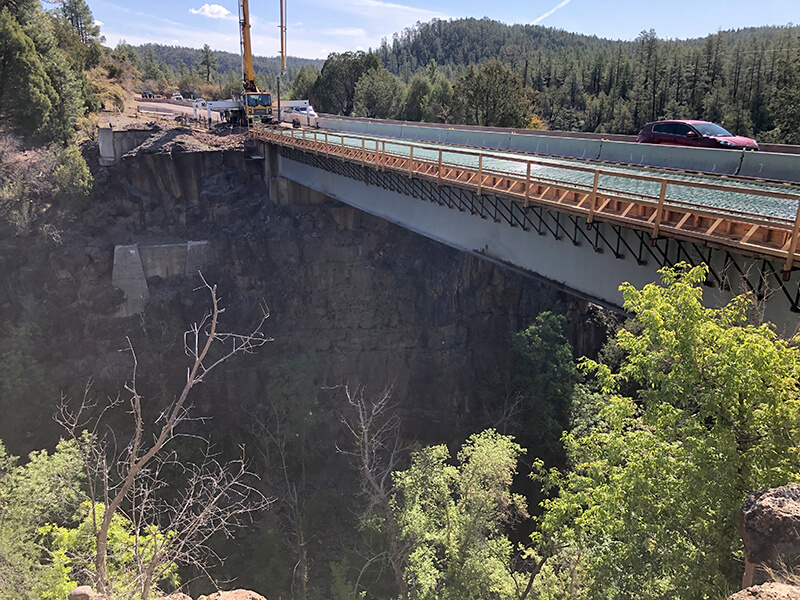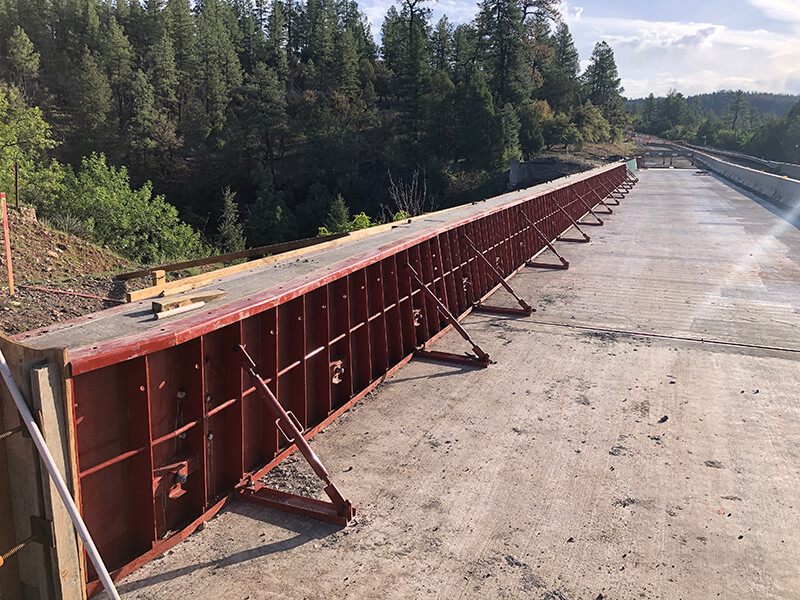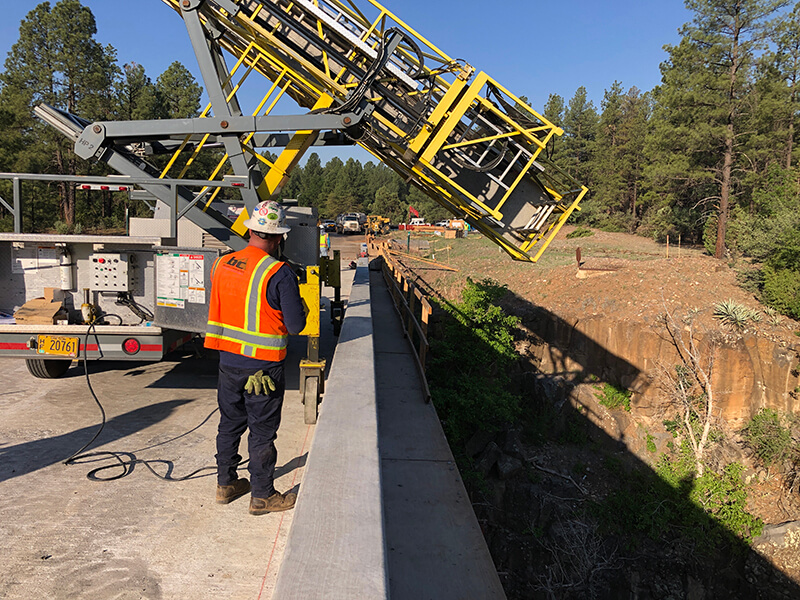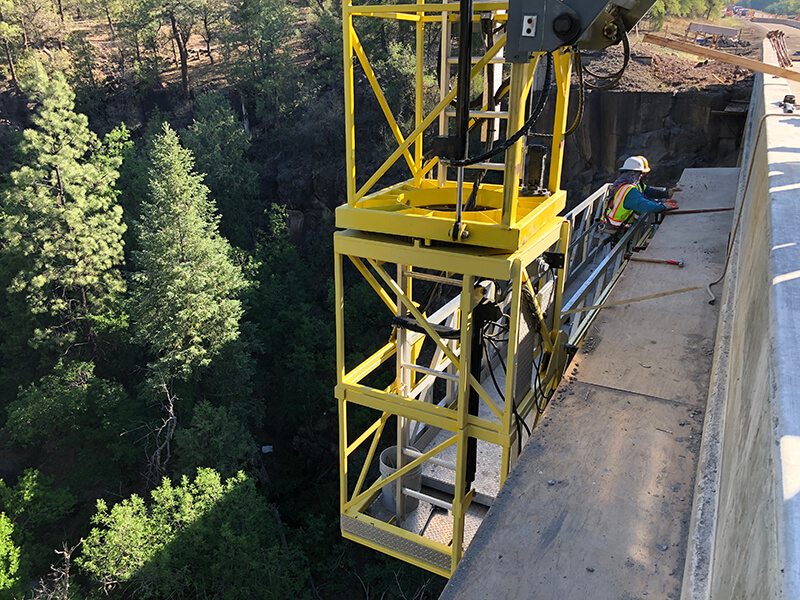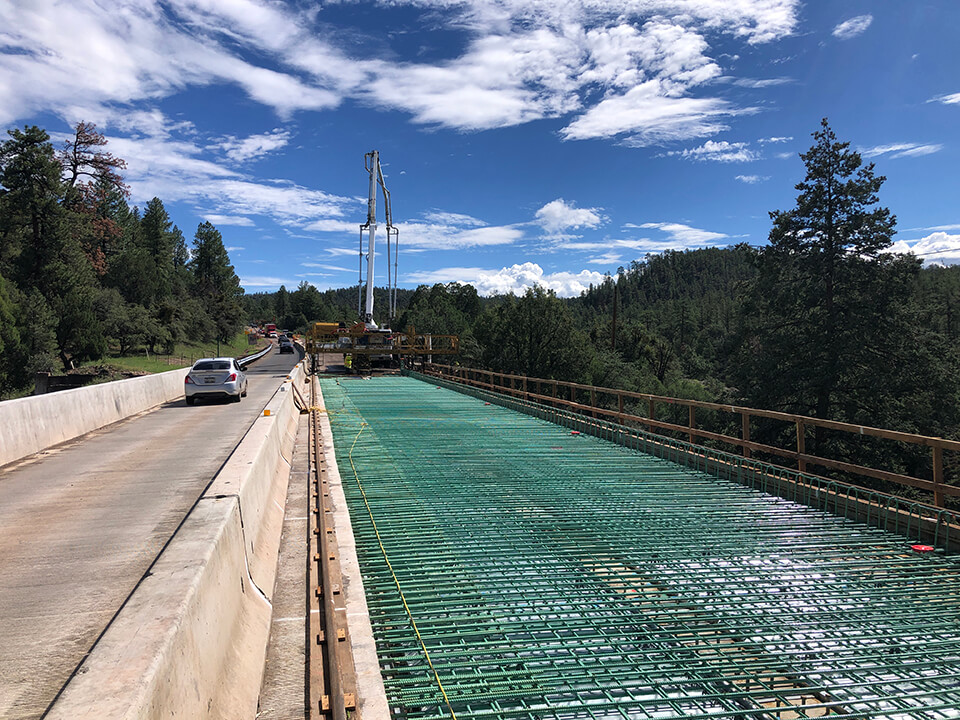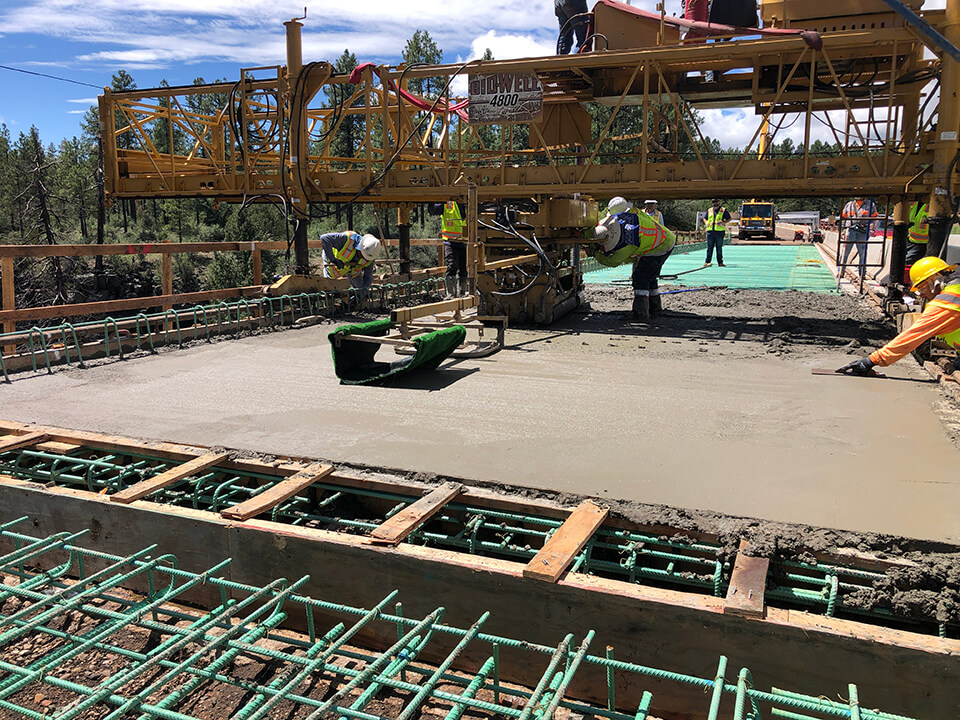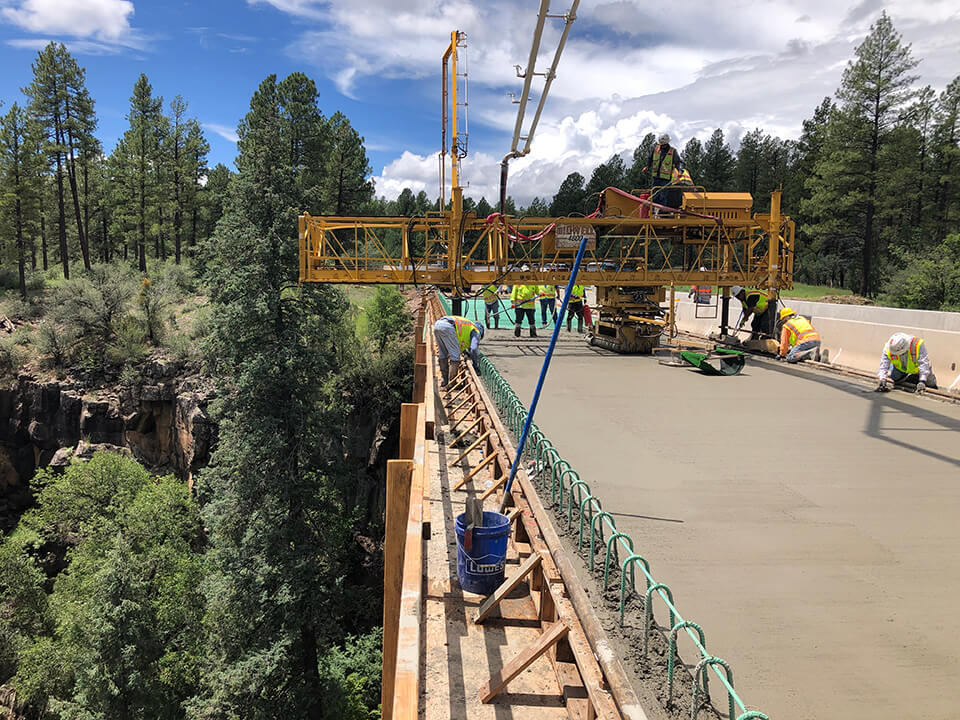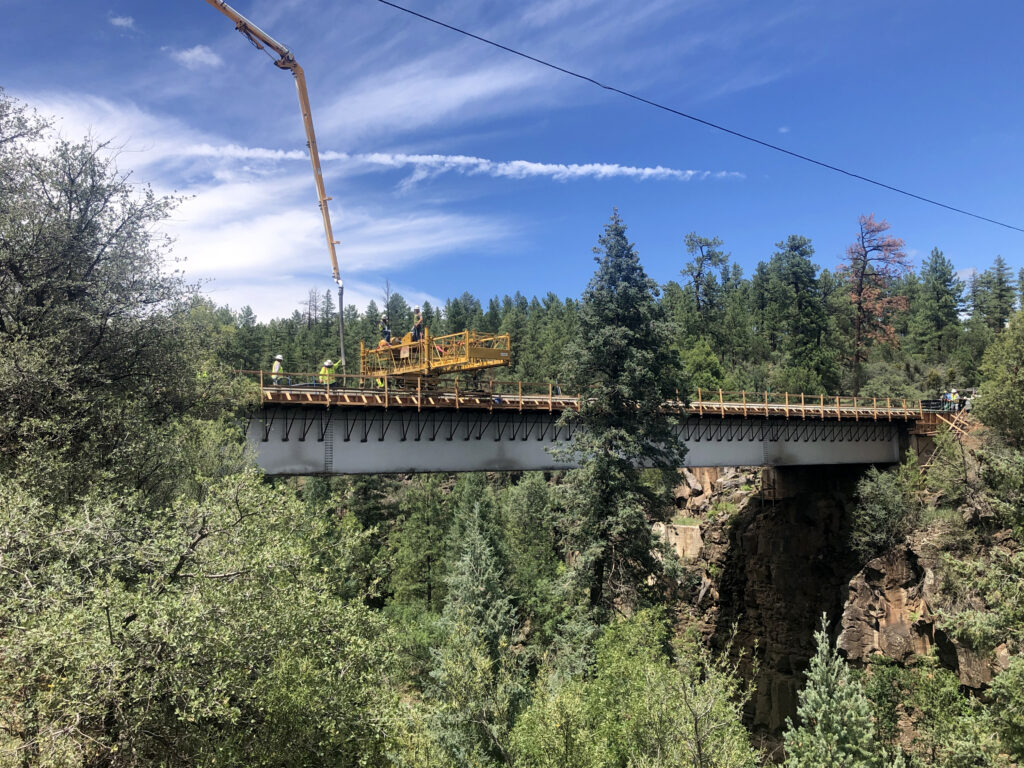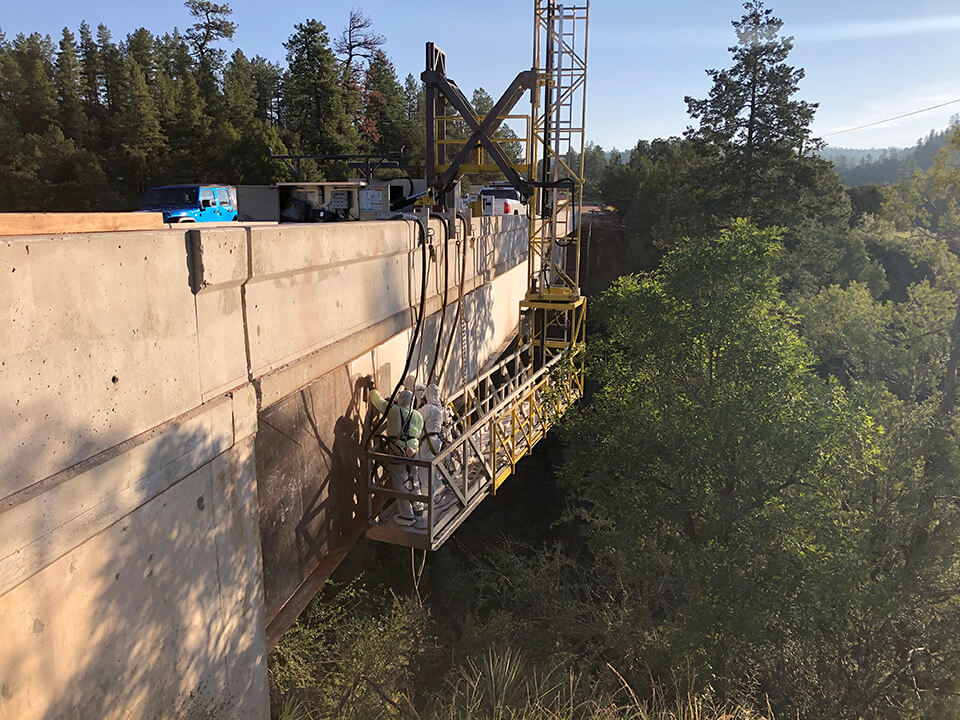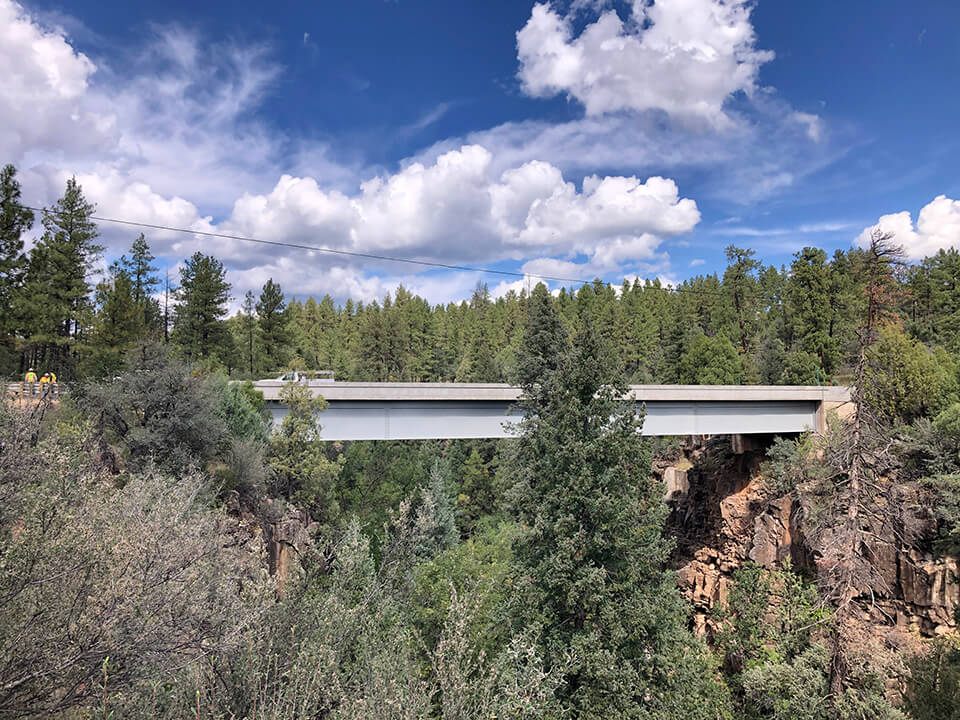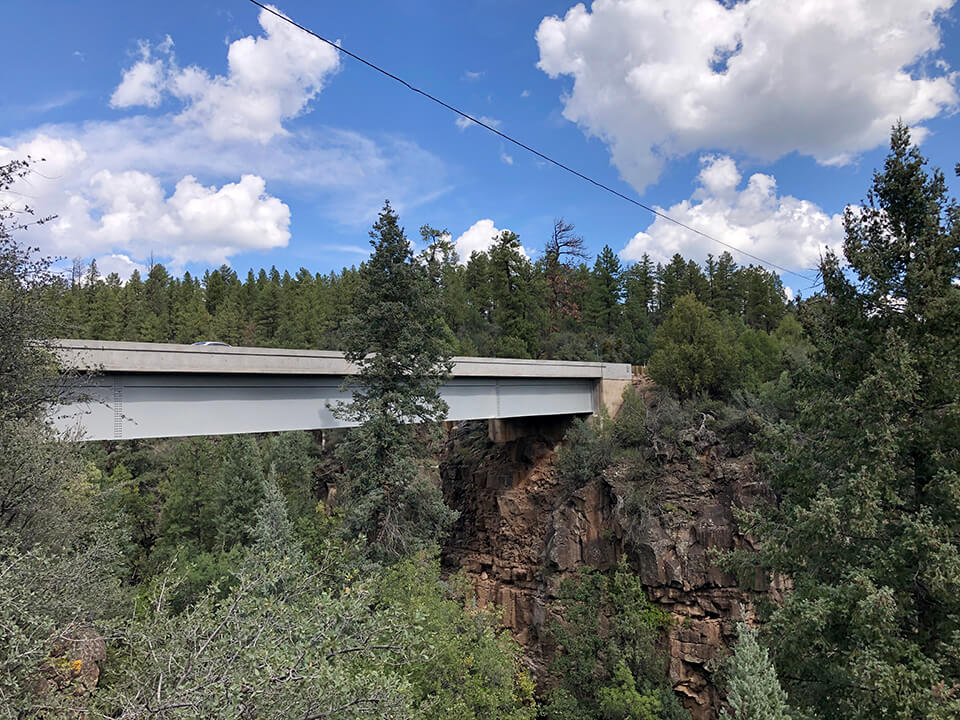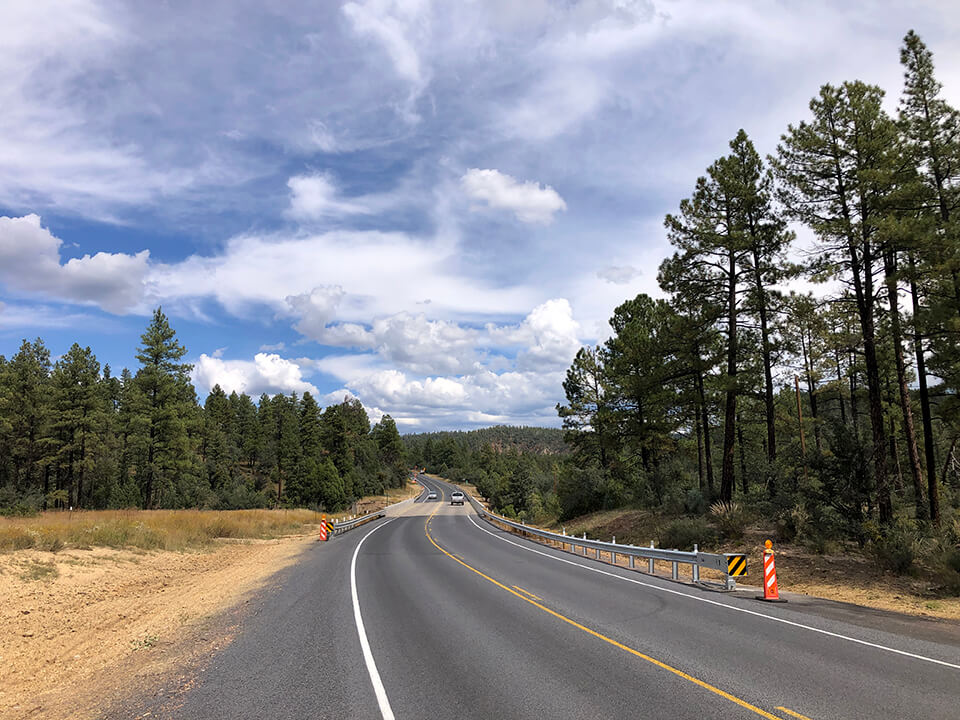Post Office Canyon Bridge
Client
ADOT
Location
Whiteriver, Arizona
Delivery
Structures
Cost
$2.51M
Date Completed
October 2021
AWARDS
- 2022 AGC AZ Build Arizona Project of the Year, Public Reconstruction Under $5M
- 2022 Arizona Transportation Partnering Excellence Award, Roadway Under $5M
- 2022 APWA Public Works Project of the Year, Structures Under $5M
- 2021 White Mountain Apache Tribe, Building Bridges for a Better Tomorrow Award
DESCRIPTION
The Post Office Canyon Bridge, located on the Fort Apache Indian Reservation, is a critical piece of infrastructure for the White Mountain Apache Tribe (WMAT). Located only 7-miles north of Whiteriver on SR-73, the bridge provides the only access route from Whiteriver to Pinetop-Lakeside and Show Low where many members of the WMAT work. The bridge is also located on the only access route suitable for trucking to reach the WMAT, for the alternative route on US-60 is not conducive for semi-trucks.
This award-winning project included the complete bridge deck replacement of the 170’ long single span steel plate girder bridge originally built in the 1960’s. The bridge spanned a 125’ deep canyon with shear vertical cliffs immediately off the abutments, thus major hazards were present. There was zero access from the rocky canyon below, thus all demolition and construction had to occur from atop the superstructure which included 9’ deep steel girders. Significant safety measures had to be meticulously planned and engineered into all construction phases of this project.
With the project being located on the Fort Apache Indian Reservation, Federal Regulations governed and an EPA permit was required. The bridge also spanned an active stream in the rocky canyon below and was located in the White Mountains, thus environmental measures were a critical aspect of the project. With construction occurring during the dry spring and summer months in the windy White Mountains, fire had to be accounted for during every step of construction.
While the Post Office Canyon Bridge project was an extremely successful project from a safety, planning, and execution perspective; the collaborative teamwork and partnering that led to the overall success of the project was even more impressive. Numerous stakeholders worked hand in hand with one common goal of executing this project as safely and quickly as possible for the benefit of the traveling public and residents of the WMAT. Post Office Canyon Bridge was completed 53 working days ahead of schedule with zero safety incidents of any kind.
Stakeholders involved in the project were the White Mountain Apace Tribe (WMAT), WMAT Tribal Employment Rights Office (TERO), Bureau of Indian Affairs (BIA), WMAT Police Department, WMAT Fire Department, White Mountain Unified School District, WMAT residents, the traveling public, ADOT, US Forest Service, and the EPA.
PRECONSTRUCTION SERVICES
With Post Office Canyon Bridge spanning a 125’ deep canyon and being located in the heart of the White Mountains, every single construction operation required diligent safety, fire mitigation, and environmental planning. Shortly after ADOT posted their as-read bid results for the project, Banicki partnered with the BIA Fire Management Division, the WMAT Fire Department, and the WMAT Police Department to develop comprehensive safety, fire mitigation, environmental mitigation, and emergency rescue plans for each operation on the project.
Banicki also performed extensive preconstruction outreach with the WMAT and the White Mountain Unified School District to brief them on the construction sequence and overall schedule of the project. Temporary traffic signals were used on either end of the project limits to facilitate the phased construction of the bridge and maintain one open travel lane at all times. Two months prior to starting construction, Banicki worked with the provider of the temporary traffic signals to develop project specific accelerated cycle times for northbound traffic in the morning and southbound traffic in the evening. We also worked with the signal provider to ensure there were three redundant forms of communication between the signals due to their not being ideal cell service in the area. This ensured there were practically zero impacts to traffic flow through the project corridor, something members of the WMAT who used the bridge daily to commute to work as well as the White Mountain Unified School District were very grateful for.
